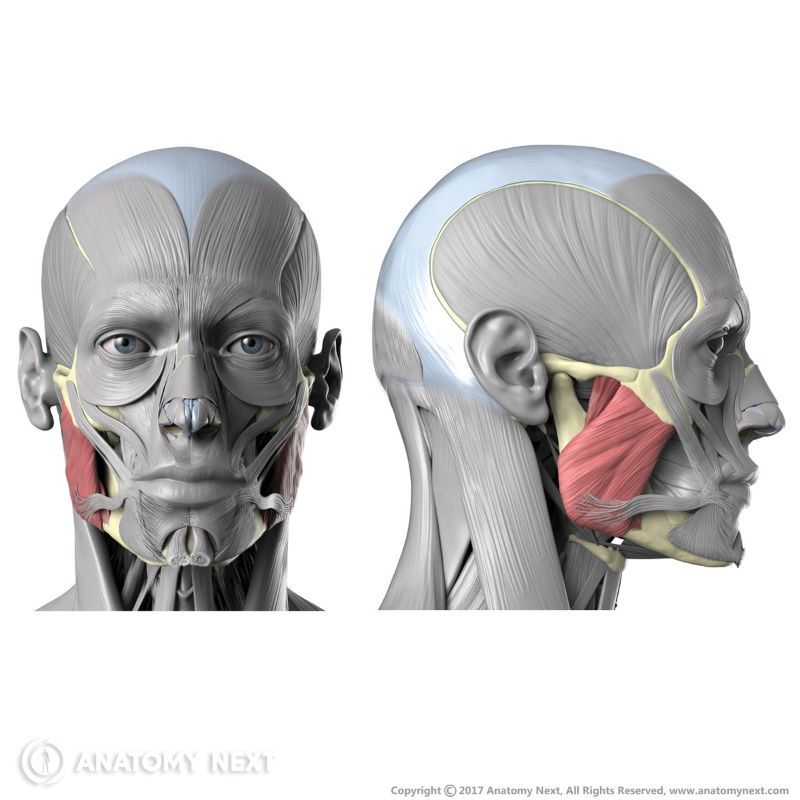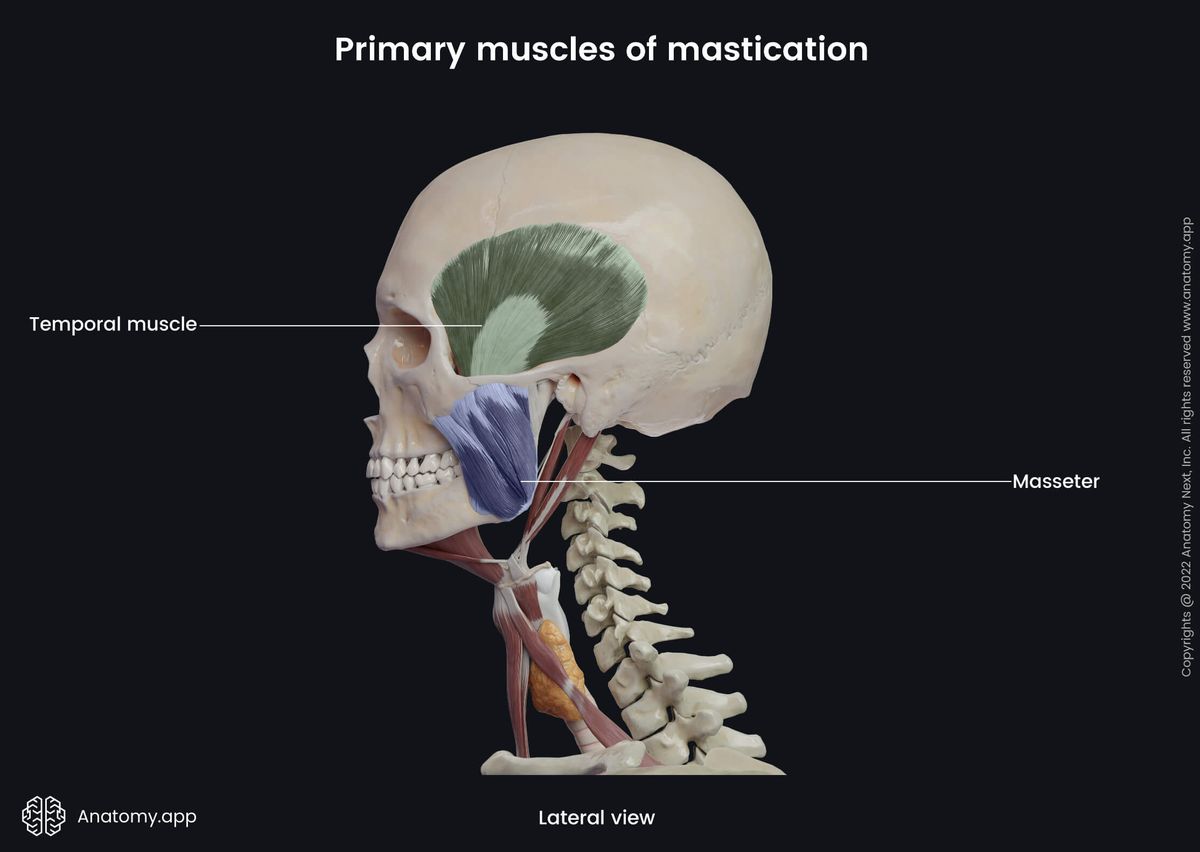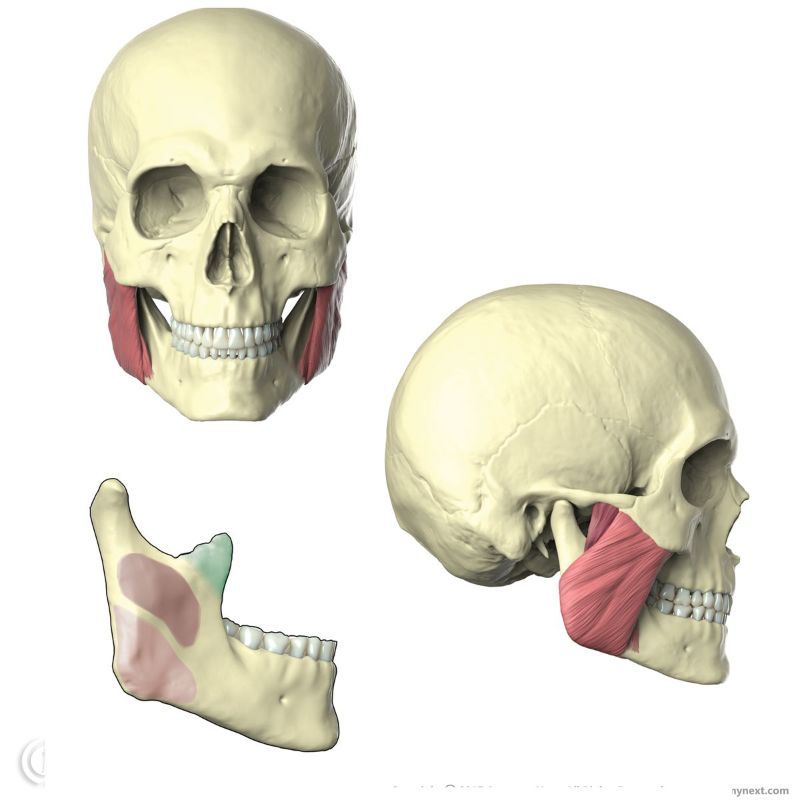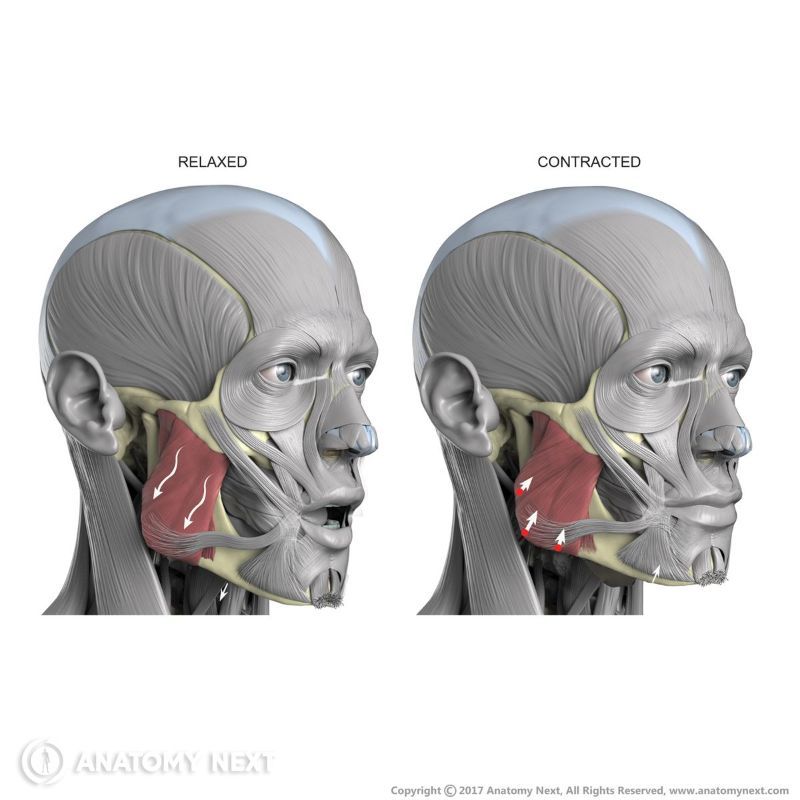- Anatomical terminology
- Skeletal system
- Joints
- Muscles
- Head muscles
- Neck muscles
- Muscles of upper limb
- Thoracic muscles
- Muscles of back
- Muscles of lower limb
- Heart
- Blood vessels
- Nervous system
- Respiratory system
- Digestive system
- Lymphatic system
- Female reproductive system
- Male reproductive system
- Endocrine glands
- Eye
- Ear
Masseter
The masseter (Latin: musculus masseter) is a thick and quadrangular-shaped paired masticatory muscle that elevates the lower jaw. The masseter is classified as the primary muscle of mastication.
| Masseter | |
| Origin | Zygomatic arch |
| Insertion | Masseteric tuberosity of mandible |
| Action | Elevates mandible |
| Innervation | Masseteric nerve of mandibular nerve (CN V3) |
| Blood supply | Masseteric artery of maxillary artery |
The thickness of the masseter muscle is approximately 15 millimeters. It negatively correlates with the mandibular plane angle and positively with the height of the mandibular ramus and thickness of the alveolar process. Therefore, the masticatory function influences the morphology of the mandible.1 (Kubota et al. 1998)


Origin
The masseter muscle originates from the zygomatic arch that is formed by the zygomatic process of the temporal bone and temporal process of the zygomatic bone.

Insertion
The masseter inserts on the masseteric tuberosity of the mandible.

Action
Contractions of the masseter muscle elevate the mandible.

Innervation
The masseter muscle is innervated by the masseteric nerve, a branch of the mandibular division of the trigeminal nerve (CN V3).
Blood supply
The masseter is supplied with the arterial blood by the masseteric artery of the maxillary artery.